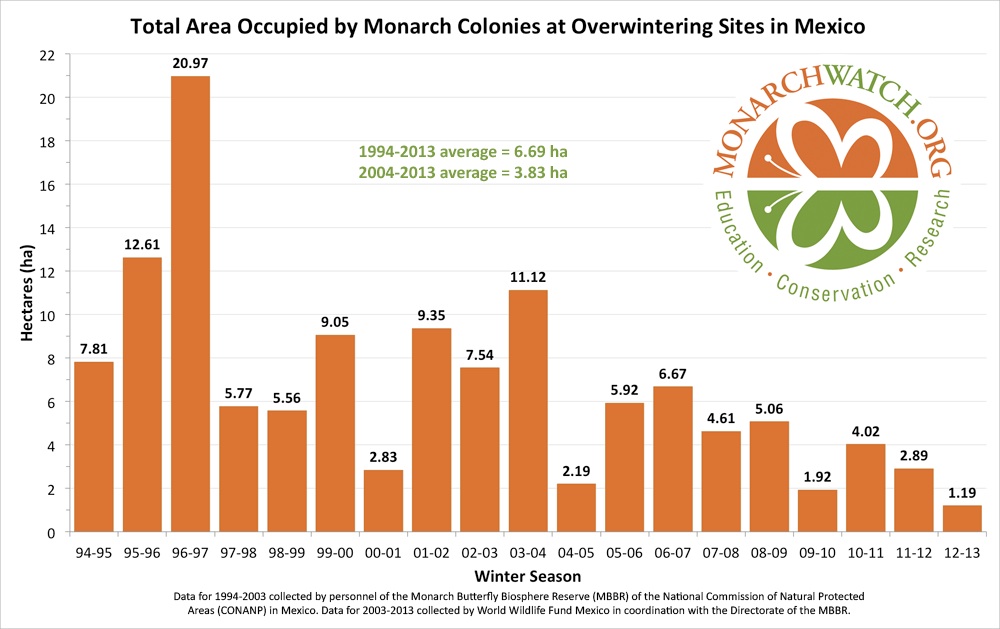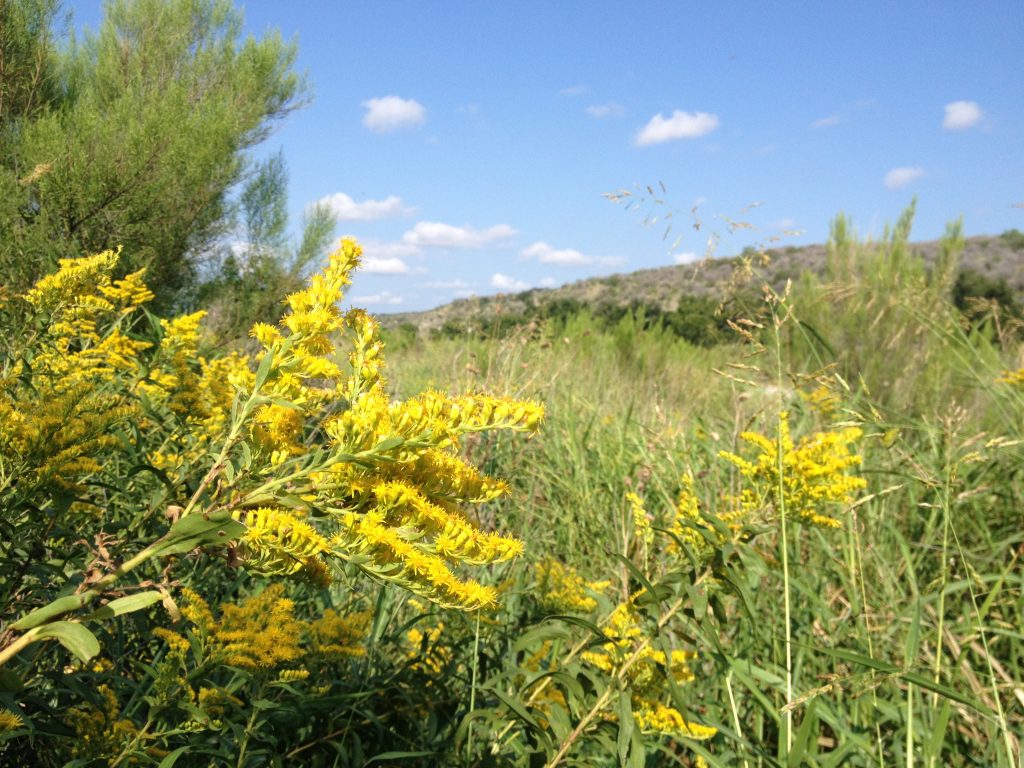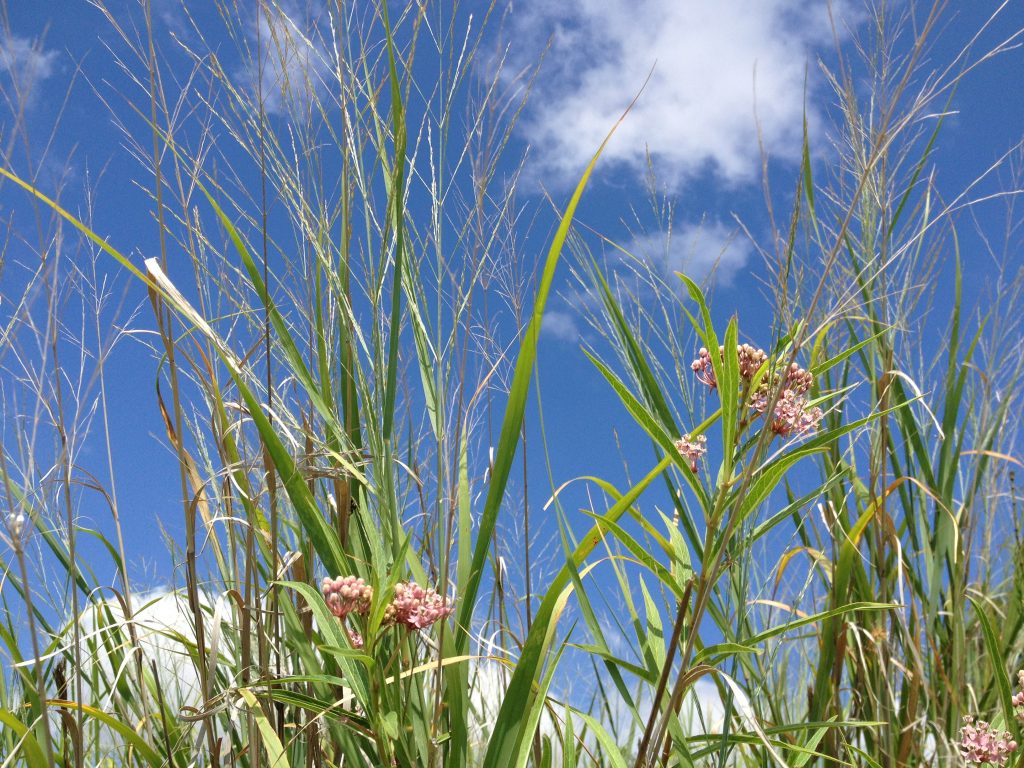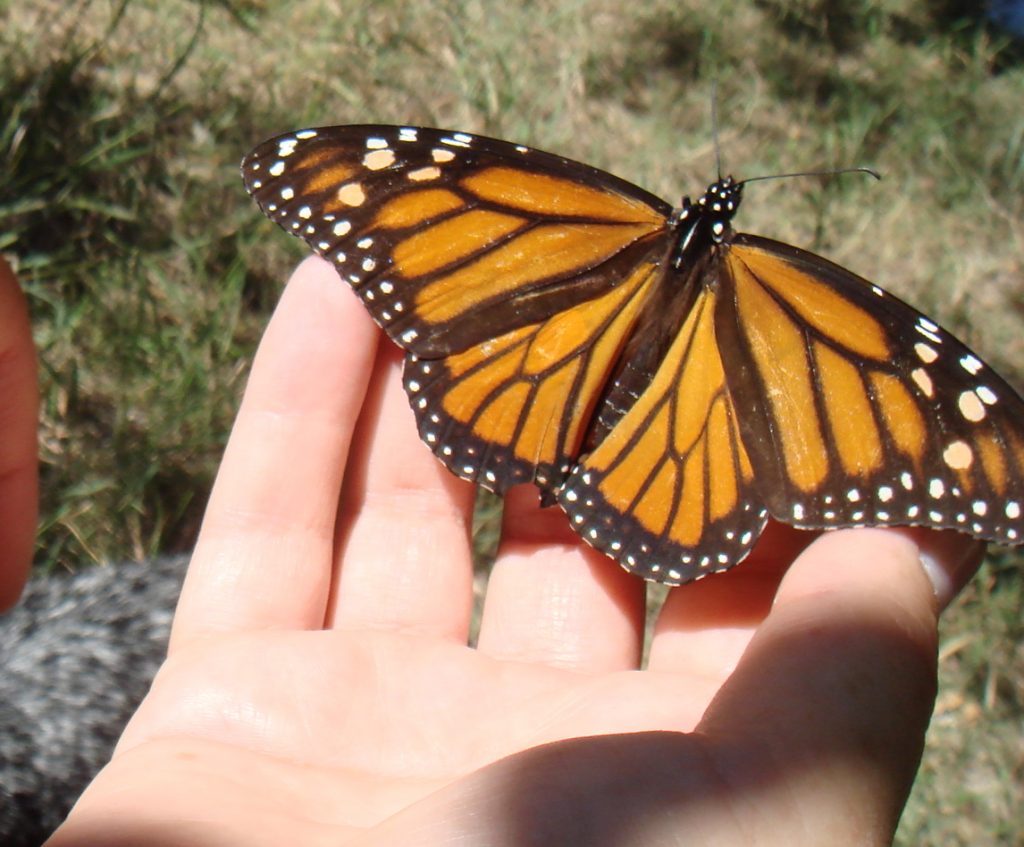Two FOS (First of Season) Monarch butterflies made an appearance on the Llano River this weekend–pretty early for migrants. They looked to be in good shape and were heading south.
We generally don’t start seeing Monarchs until Labor Day weekend, three weeks from now. These early arrivals are called the “premigration migration” and typically show up about a month before the “real migration.” If this is the case, we’ll be seeing pulses of Monarchs by mid September.
Recent years have been tough on Monarch butterflies. Climate change and drought have messed with their host and nectar plants’ life cycles and genetically modified crops have sterilized their breeding grounds in the Midwest. Wildfires and aerial pesticide spraying wreaked havoc with their journey through North Texas last Fall, and logging threatened their roosting sites in Mexico upon their arrival.
Could it get any worse?
Probably. Last year, their population dropped to its lowest level in history. They occupied less than three acres of the ancient Oyamel forest in Michoacán, Mexico, where they roost each winter. That’s right: the entire migratory population of Monarch butterflies occupied a space smaller than most shopping malls.

The decline of the Monarch butterfly population. In the 90s, their roosting grounds averaged 22 acres. Graphic via Monarch Watch
Scientists, enthusiasts and butterfly watchers have been bemoaning the lack of Monarch butterflies on various listservs all year. The Spring season was skimpy, and Fall doesn’t look any better.
“One of my monarch students, a 15-year-old budding biologist told me tonight that he’s seen NO sign of eggs nor larvae on hundreds of plants. He lives in a rural area; milkweed is abundant on roadsides, fields and his garden.”
–Debbie Jackson, Davisburg, MI, August 5
“There weren’t many Monarchs in Canada and the mid-west. I’ve been reading the butterfly counts that Don Davis has posted. Most listed zero Monarchs.”
–Mona Miller, Herndon, VA, July 20
“Where are the Monarch butterflies?” asked the headline on a MSN News story August 7. “Michigan is missing its monarch butterflies. So are Delaware, Minnesota and Montreal,” it continued. “We go out and are looking, looking, inspecting thoroughly,” Holli Ward, executive director of the Michigan Butterflies Project near Grand Rapids, told the Detroit Free Press….We have not seen a single egg or caterpillar.”
“Monarch butterflies hit record lows nationwide,” read the headline of the Rockford Register Star in Illinois on July 26.
Our friend and founder of Monarch Watch Dr. Chip Taylor told the publication that the population crash can be attributed to weird weather in 2012, including one of the hottest, driest summers in decades. “The heat shortened the lifespan and lessened the egg-laying capacity of female monarchs,” Dr. Taylor explained.
I’m predicting a new worst year in history.

Cocoa could practically walk across the Llano River this weekend. Doesn’t bode well for nectar sources this fall. Photo by Monika Maeckle
Our drought marches on, dropping water tables, shrinking our rivers and the riparian systems that sustain them and no end seems in sight. Cocoa, my loyal butterflying assistant pictured above, could just about walk across the Llano River this weekend without getting her feet wet. This is a first and doesn’t bode well for sustaining the milkweed host and nectar sources Monarchs need to get to Mexico.

Goldenrod busted out in big blooms following a nice 3.5-inch rain. If it can stay robust another month, whatever Monarchs arrive will have plenty of nectar. Photo by Monika Maeckle
We did have some well-timed rains this month, however. The rain gauge showed a stout 3.5 inches. Blooming Goldenrod awaited ubiquitous Sulphurs and Swallowtails as occasional Queens mingled with the two solo Monarchs referenced earlier. Scattered showers are predicted for next week, which may keep the blooms in shape until our first wave of migrants typically show up–around Labor Day.

Swamp milkweed, Asclepias incarnata, present but scrawnier and less abundant than usual. Photo by Monika Maeckle
Swamp milkweed, Asclepias incarnata, a Monarch host plant, also began its late summer bloom, in smaller stands and scrawnier than usual, but present nonetheless. We found four eggs which could be either Queens or Monarchs. We’ll keep you posted.
More posts like this:
- How to tag Monarch Butterflies
- Founder of the Monarch Roosting Spots Lives a Quiet Life in Austin, Texas
- Monarch Butterflies: the Panda Bears of Climate Change?
- Tracking the Monarch Migration from Your Desk
- A Year in the Life of a Mostly Native Urban Butterfly Garden
- As the Earth Heats Up, What Does it Mean for Monarch and other Migrating Butterflies?
Like what you’re reading? Follow butterfly and native plant news at the Texas Butterfly Ranch. Sign up for email delivery in the righthand navigation bar of this page, like us on Facebook, or follow us on Twitter, @monikam.


I usually have many monarchs coming thru my yard and this year only 1 and no eggs or cats. It has been really hot in Oregon this year and I am not sure if the heat has kept them away or if it’s just too hot for me to monitor the yard. Either way there are WAY fewer than normal.
I live in a rural area of southern indiana and have not spotted any monarchs, my butterfly weed is usually stripped but not one egg this year, I have also only spotted 2 honey bees on my 5 acres. Planet earth is in trouble.
I am Kenora, ON, in central Canada, and have had NO monarchs in my 400-500-plant patch of milkweed. I have monitored many sites in the 200 km stretch of rural highway between here and Winnipeg. Nothing. In 2012 we released more than 250 monarchs which had been raised indoors in my laundry room at camp. I have been recording our monarch history since we planted our first milkweed plant in 1996. We have been raising them indoors for about 10 years.
What I think is also interesting is that in general, butterflies and moths are conspicuously absent from our area this year. We had an influx of Canadian Tiger Swallowtails earlier, but the usual variety and numbers of other butterflies and moths is distinctly less this year.
2013
While in TN. we saw one monarch butterfly. We live in NW Ohio and have seen only two. Our grandchildren have always helped us raise and then release the Monarch and the Eastern Black swallowtail but there are hardly any to be seen . It concerns us greatly. PLANT A PATCH OF MILKWEED FOR THE MONARCHS. If we loose the Monarch migration, what a shame. “IF ALL THE BEASTS WERE GONE, MAN WOULD DIE FROM A GREAT LONELINESS OF SPIRIT. FOR WHAT EVER HAPPENS TO THE BEASTS, HAPPENS TO MAN. ALL THINGS ARE CONNECTED.”
I released 4 butterflies this year, only 2 made it.
I will read your comment to my Yoga Class – I give m.w. seeds to everyone and have them spread them.
Good for you, Susie. KEep on sharing the milkweed. MM
Thanks for your support. I learned a lot.
Giving milkweed to children now.
SUSIE
Last summer we hatched 246 Monarchs. they had come in by mid July and started hatching by the beginning of August. it is now Aug 12th and I just saw a female yesterday on the Milkweed I hope she was laying eggs but I didn’t find any.
We had a single Monarch, which had part of on wing missing, visiting the milkweed in our garden last week.
Was here for an hour or so then drifted off.
We have Queens every day, on the milkweed and mist flower, but not nearly as many as last year, when it was
common to have a dozen or more each day.
kw
I live in Chester County, Pennsylvania and have seen only one Monarch butterfly this year. So sad.
On Journey North I will be posting several “Fall Roost” videos of the monarchs in Minnesota around Sept. 1.
Based on the preliminary evidence I have received from other people in the upper Midwest so far (west of the Great Lakes), I believe the fall migration through the Midwest and west-central Texas should be considerably larger than last year, hence the size of the overwintering population in Mexico could be 2-3 times larger.
I live in central Indiana and have been raising monarchs fora couple of decades.This year is actually better than last in terms of eggs and cats,still well under my norm. So far 7 released last week and i have anew crop on my porch. I gave 4 cats and eggs to an elementary school class and they they love Mr. Wiggles and BLE(big leaf eater)..
I would like to do my part and ranch Monarchs for free release in the Ottawa area. Area farmers grow organic soy so would love it if I took their milkweed. Cage construction is no issue. So I have everything but eggs and good advice. What can you tell me about your operation?
This is the first year I have raised any indoors but I only found 9 cats and released them almost two weeks ago. I am the only one from our area who watches for them to have them. We were alI ready for them with plenty of milkweed too. I found it odd that the chrysalis hatched in seven days. So sad.
I planted milkweed in my garden, found 5 eggs brought them inside – released 4, 2 flew away the others didn’t make it. had few sightings. I live in Kalamazoo, Mi.